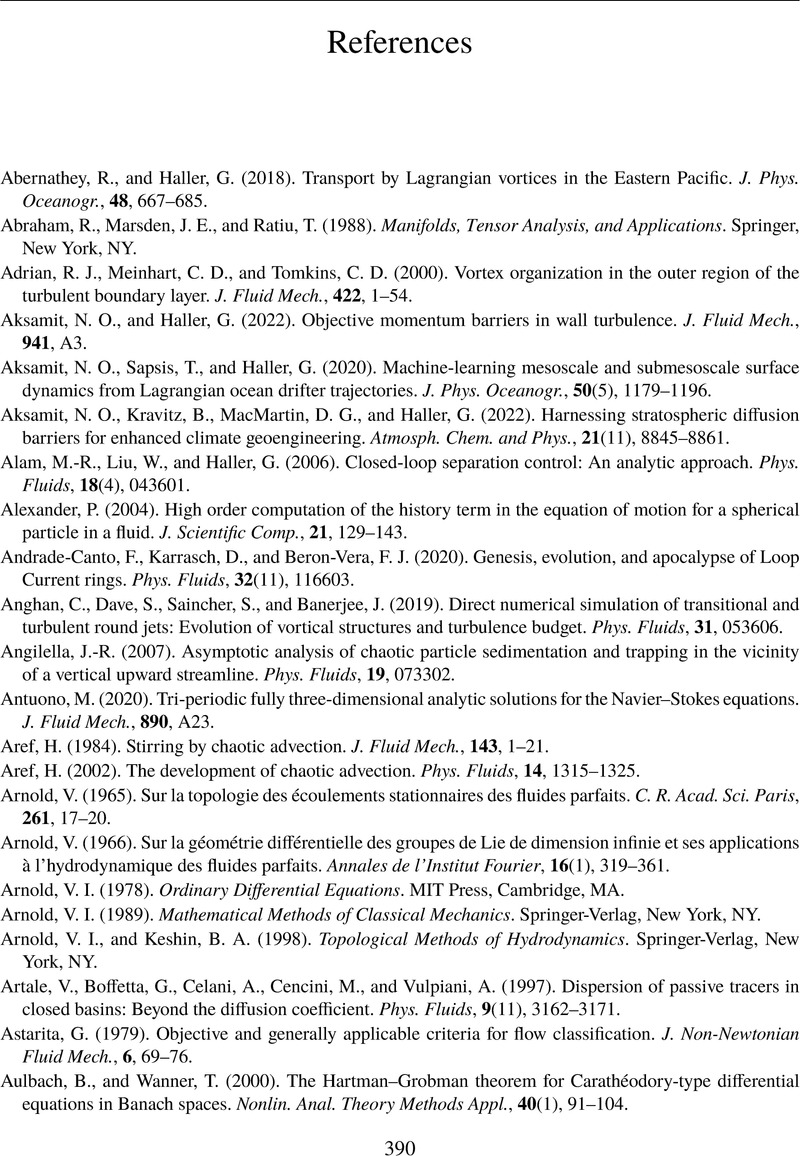 Transport Barriers and Coherent Structures in Flow Data
Transport Barriers and Coherent Structures in Flow Data Book contents
- Frontmatter
- Dedication
- Contents
- Preface
- Acknowledgments
- 1 Introduction
- 2 Eulerian and Lagrangian Fundamentals
- 3 Objectivity of Transport Barriers
- 4 Barriers to Chaotic Advection
- 5 Lagrangian and Objective Eulerian Coherent Structures
- 6 Flow Separation and Attachment Surfaces as Transport Barriers
- 7 Inertial LCSs: Transport Barriers in Finite-Size Particle Motion
- 8 Passive Barriers to Diffusive and Stochastic Transport
- 9 Dynamically Active Barriers to Transport
- Appendix
- References
- Index
- References
References
Published online by Cambridge University Press: 20 February 2023
- Frontmatter
- Dedication
- Contents
- Preface
- Acknowledgments
- 1 Introduction
- 2 Eulerian and Lagrangian Fundamentals
- 3 Objectivity of Transport Barriers
- 4 Barriers to Chaotic Advection
- 5 Lagrangian and Objective Eulerian Coherent Structures
- 6 Flow Separation and Attachment Surfaces as Transport Barriers
- 7 Inertial LCSs: Transport Barriers in Finite-Size Particle Motion
- 8 Passive Barriers to Diffusive and Stochastic Transport
- 9 Dynamically Active Barriers to Transport
- Appendix
- References
- Index
- References
Summary

- Type
- Chapter
- Information
- Transport Barriers and Coherent Structures in Flow DataAdvective, Diffusive, Stochastic and Active Methods, pp. 390 - 405Publisher: Cambridge University PressPrint publication year: 2023


